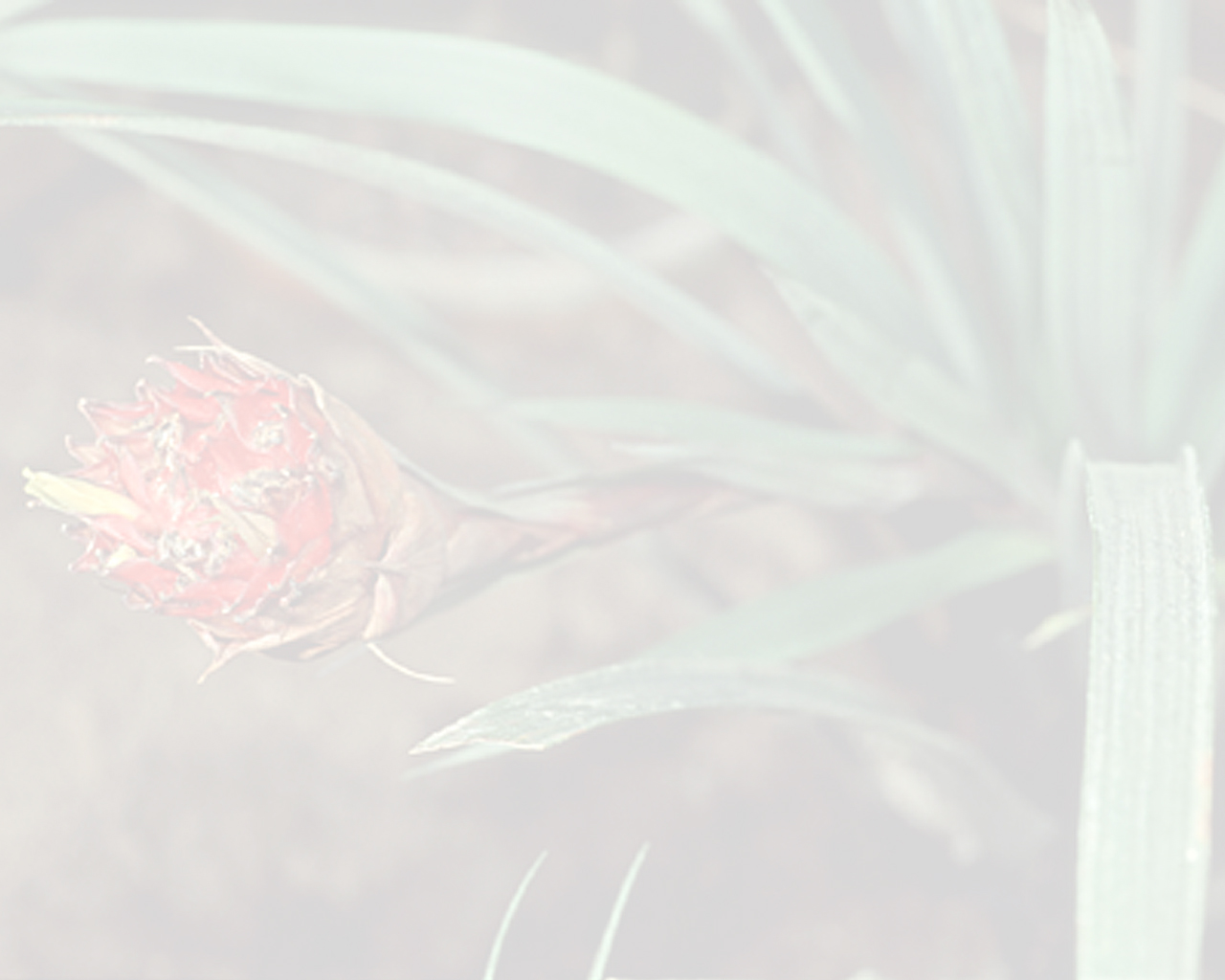Guzmania scherzeriana Mez
Literature references:
*move your mouse pointer over the page numbers to see comment
Comments:
- It has become evident that no varietal division can be made in the above material. The density and spread of flowers depends largely on age and dimensions of parts show no distinction nor geographic correlation.
Observations on Guzmania scherzeriana Werner Rauh in J Brom. Soc. 36(4):161-4. 1986
According to the diagnosis of Carl Mez, G. scherzeriana is a stemless plant, up to 1 m high with a funnelform rosette up to 80 cm high and 1 m in diameter . The inflorescence is laxly bipinnate, 18-37 cm long, glabrous. The branches of the inflorescence are suberect to spreading, 5-15 cm long with a naked, sterile base; the floral bracts, much exceeded by the sepals, are yellow, as are those of the green-tipped petals. Unfortunately, he said nothing about the color of either the inflorescence rachis or the primary bracts .
In Notizblatt des Botanischen Gartens und Museum zu Berlin-Dahlem, volume 14, number 124, 1939, Harms describes Guzmania herthae as being from west Ecuador (San Carlos de los Colorados), collected by Hertha SchultzeRhonhof, no.1923 (Sept. 1935). She remarks that the inflorescence and the bracts are bright scarlet-red; the flowers pale yellow and green-tipped. In 1980 we collected a similar plant under the number Rauh 54 338 near Los Bancos in West Ecuador.
According to L.B. Smith Guzmania herthae is synonymous with G. scherzeriana Mez. Harms also writes that G. herthae seems to be closely related to G. scherzeriana. That means in G. scherzeriana the inflorescence axis, the primary bracts and the floral bracts are bright scarlet whilst the sepals and the green-tipped petals are yellow.
In Botanische Jahrbucher fur Systematische Botanik und Pflanzengeographie, volume 72, pages 290-291, Karl Suessenguth (Munic) describes Guzmania superba (Type Carillo no.1585, Costa Rica), which is also placed by L.B. Smith into synonymy with G. scherzeriana. The remarks of the color of the primary and floral bracts, sepals, and petals are, unfortunately, very poor. It is mentioned only that the floral bracts are rose (or partly yellow at the apex) and the high connated sepals are of a yellowish color .
Now, Erwin Patzelt of Oldenburg, Holstein, has collected in a mountainous forest near Rio Pindo in eastern Ecuador a striking variety of G. scherzeriana growing as an epiphyte . We are cultivating it in the Heidelberg Botanical Garden under the number B.G.H. 54791. It differs from the known G. scherzeriana described by Mez (var. scherzeriana, see below) in the following characteristics:
Plant bigger than the type, flowering up to 1.2 m; rosette up to 80 cm high and :tIm in diameter. Scape erect, glabrous, pale red, red-violet striped. Scape bracts densely imbricate, the basal ones subfoliate with red violet sheaths; upper scape bracts carmine red. Inflorescence bipinnate, sometimes tripinnate, up to 35 cm long and 20 cm wide, with ca 12 nearly horizontally spreading branches; the rachis and the primary bracts are bright carmine red; the somewhat fleshy sepals, which are high connate and the petals are pure white. Stamens and style are included. After anthesis the red color disappears so that the whole inflorescence except for the rachis is pure white. This does not happen only in one specimen, but in all collected plants which we are cultivating. Therefore, we have to distinguish the following two varieties because of the color of the inflorescence and the flowers .
1. Inflorescence rachis, primary and floral bracts bright cinnabar-red; sepals and petals pale lemon-yellow; petals green tipped-var. scherzeriana.3
2. Inflorescence rachis, primary and floral bracts bright carmine-red; sepals and petals white - var . albiflora Rauh var. nov. Now treated as G. alborosea
Some additional remarks concerning the variety albiflora: In cultivation the petals often do not develop, but degenerate within the calyx. With age the sepals, the floral bracts, and, in part also, the rachis of the spikes become bright green as a result of the formation of chloroplasts in the cells of the outer layers of the parenchyma cells of the sepals. We have never observed this phenomenon in other bromeliads. Indeed, the sepals can be green before anthesis, and they either keep this color or change it, but we never before have observed white sepals becoming green after anthesis.
As with many guzmanias, G. scherzeriana is also a night bloomer; the flowers begin to open in the late afternoon and are already closed by the next morning. Surely they are pollinated by night butterflies. —See Smith & Downs 1977

